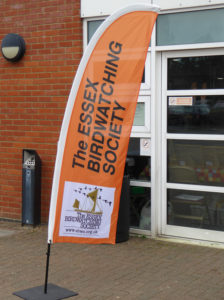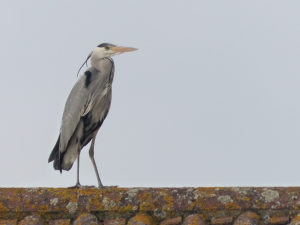It was on Sunday, March 21st 1954 when J. A. Baker’s serious birdwatching and recording began, as he went down Patching Hall Lane, Chelmsford to the outlying village of Chignal Smealy. Over the next few weeks, he started to discover the birds of the area. Perhaps the best description of a first sighting came on Friday, May 21st 1954: I saw shelduck for the first time, in green, bronze, black, white, red. like huge decorated vases, with duck’s heads stuck on.

Baker was able to identify his birds with the help of fellow birdwatching friends and also by using his extensive library of bird books. You can do the same. There are many books, for example through the Royal Society for the Protection of Birds. Binoculars are also helpful, with bird food encouraging birds into YOUR garden! You can also join a birding group, such as your county’s bird watching group. In Essex we are very fortunate to have the excellent Essex Birdwatching Society which holds indoor meetings, field visits and a biennial conservation conference, most recently on the subject of Coastal & Marshland Birds of Essex. See its website at EBWS website. J A Baker was a member of the Society and contributed to its annual Essex Bird Report, which includes the observations of birdwatchers throughout the county. Another publication is the twice yearly Essex Birding.
There are also many local branches of the RSPB. In addition it is possible to take courses in creative writing, such as the Wild Writing MA at the University of Essex, tutored by Dr James Canton. See University website.
Never forget that your local area is full of natural wonders to be explored, discovered and enjoyed. At the end of his introductory section, in The Peregrine, entitled Beginnings, Baker writes: I have tried to recapture the extraordinary beauty of this bird and to convey the wonder of the land he lived in, a land to me as profuse and glorious as Africa. It is a dying world, like Mars, but glowing still.
Fortunately, shortly after Baker was writing, the damage being caused by chemicals such as DDT was being realised. The past 50 years have seen a much greater awareness of our environment and pollution. The countryside is no longer dying, but, of course, is coming under increasing pressures as a result of, for example, changing agricultural practices, pressures from house and road building and climate change.

The thrill of seeing a bird species for the first time never wanes! David Lindo, the Urban Birder, based in west London reminds us not to neglect our local patch and to remember ‘Anything can turn up anywhere at any time.’ David’s website The Urban Birder is a really great way to learn about and watch birds in towns and cities! As an example of what can be seen, the grey heron shown above lands frequently on a neighbour’s roof!
And, never forget, the best is always still to come. To quote J A Baker in The Peregrine on March 10th .
This mastery of the roaring wind, this majesty and noble power of flight, made me shout aloud and dance up and down with excitement. Now, I thought, I have seen the best of the peregrine; there will be no need to pursue it farther; I shall never want to search for it again. I was wrong of course. One can never have enough.
Enjoy your Walking and Happy Birding!
The publication of Hetty Saunder’s book My House of Sky has increased interest in Baker in his home town, Chelmsford. There was an excellent article about J A Baker by Darryl Webber in the Essex Chronicle of November 16, 2017.
